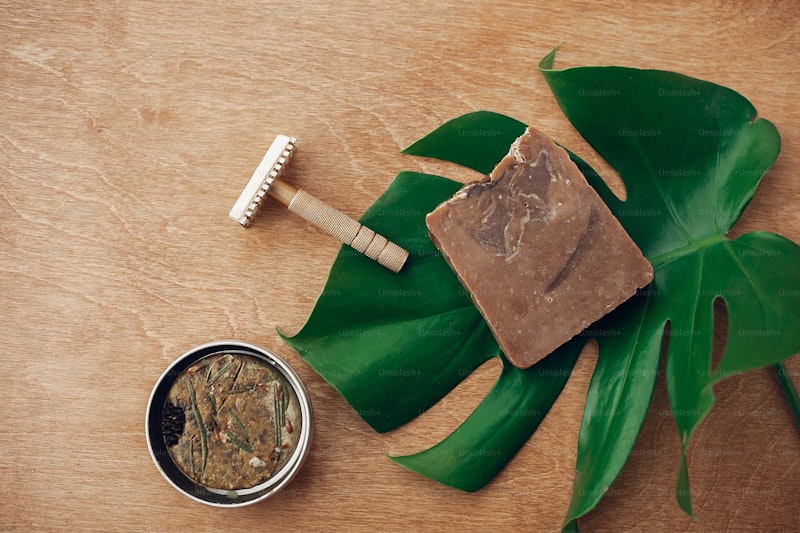Herbalism, a cornerstone of traditional medicine, exemplifies this relationship between nature and healing. Plants like ginseng, turmeric, and echinacea have gained global recognition for their medicinal properties. Each herb carries a story of discovery, passed down through generations, and validated by modern science. Their effectiveness in alleviating conditions from inflammation to infections underscores nature’s role as a pharmacy in itself.
Moreover, traditional Chinese medicine (TCM) and Ayurveda from India exemplify holistic approaches that integrate natural elements. TCM’s focus on balancing qi (life force) through acupuncture and herbal formulas harmonizes with nature’s rhythms. Ayurveda, with its emphasis on doshas (body types) and herbs like ashwagandha and neem, aligns health with natural cycles.
Nature also offers minerals and elements vital to traditional healing. Examples include the use of clay for detoxification in indigenous cultures or the application of salt for purification and preservation in various rituals.
The beauty of nature lies not only in its biodiversity but also in its ability to provide sustainable health solutions. Unlike synthetic drugs, natural remedies often have fewer side effects, fostering a gentler approach to wellness. This connection encourages a deeper appreciation for our environment’s gifts, promoting conservation efforts to safeguard medicinal plants and habitats.
As we navigate modern healthcare challenges, integrating nature’s wisdom into mainstream medicine becomes increasingly relevant. The synergy between traditional practices and scientific advancements offers a balanced approach to wellness, respecting ancient knowledge while embracing innovation. Nature’s bounty continues to inspire, offering a profound connection to our origins and a promising path towards holistic health.
Harnessing Nature’s Pharmacy: Exploring Traditional Medicine’s Natural Remedies
Have you ever marveled at the healing power of plants and herbs that have been used for centuries? Traditional medicine, with its reliance on natural remedies derived from nature’s bounty, offers a fascinating glimpse into humanity’s enduring relationship with the environment. From the lush rainforests of the Amazon to the serene valleys of the Himalayas, traditional healers have tapped into a vast pharmacopeia provided by Mother Nature herself.
One of the most compelling aspects of traditional medicine is its deep-rooted connection to local cultures and ecosystems. Indigenous knowledge passed down through generations often holds the key to understanding the therapeutic properties of plants. Take, for example, the soothing effects of chamomile, a humble herb known for its ability to calm both mind and body. Used in teas and topical ointments, chamomile illustrates how nature’s pharmacy can alleviate stress and promote relaxation without the side effects of synthetic drugs.
Moreover, traditional medicine embraces a holistic approach to wellness, viewing health as a balance between the physical, mental, and spiritual aspects of being. This perspective underscores the use of plants like ginseng, revered in Chinese medicine for its rejuvenating properties. Known as an adaptogen, ginseng helps the body adapt to stressors while enhancing vitality—a testament to the intricate wisdom encoded in natural remedies.

In today’s world, where modern pharmaceuticals dominate the healthcare landscape, there is a growing appreciation for integrating traditional wisdom with evidence-based practices. Scientific studies continue to validate the efficacy of herbal remedies such as turmeric, celebrated for its anti-inflammatory benefits rooted in Ayurvedic traditions. As we delve deeper into the bioactive compounds of plants, we uncover a treasure trove of potential treatments that respect both tradition and innovation.
Harnessing nature’s pharmacy is not merely a journey into the past but a forward-looking endeavor that blends ancient wisdom with modern scientific rigor. By exploring the intricate web of interactions between plants and humans, we unravel new possibilities for sustainable healthcare solutions. As we navigate this evolving landscape, one thing remains clear: the healing power of nature’s pharmacy continues to inspire awe and unlock the secrets of wellness for generations to come.
This article aims to capture the wonder of traditional medicine’s natural remedies while maintaining an engaging and informative tone, optimized for both SEO and reader interest.
From Forest to Pharmacy: How Nature Shapes Traditional Healing Practices
Imagine stepping into a dense rainforest, where every leaf, bark, and root holds the potential to cure ailments. This ancient knowledge passed down through generations forms the basis of traditional healing practices. These practices are not just about treating symptoms but understanding the interconnectedness of nature and human health.
In many cultures, healers are not just doctors but guardians of ancient wisdom. They possess a deep understanding of local flora and fauna, knowing exactly which plant can alleviate a fever or soothe a wound. This intimate knowledge is often acquired through years of apprenticeship and spiritual connection with the natural world.
One of the most fascinating aspects of traditional healing is its holistic approach. It doesn’t view health issues in isolation but considers the individual as part of a larger ecosystem. This perspective mirrors how nature functions—a delicate balance where every component plays a crucial role.
Moreover, traditional healing practices often integrate rituals and ceremonies into the treatment process. These rituals serve not only to heal the body but also to restore harmony between the individual and their surroundings. It’s a profound belief that physical health is intertwined with emotional, spiritual, and environmental well-being.
In today’s world, where modern medicine often focuses on isolated compounds and synthetic drugs, the resurgence of interest in traditional healing is noteworthy. Researchers are increasingly exploring the scientific basis behind these ancient remedies, uncovering valuable compounds with potential therapeutic benefits.
The Healing Power Within: Unveiling Nature’s Influence on Traditional Medicine
Imagine walking through a lush forest, where every leaf and flower holds potential remedies. Each plant, from the humble chamomile to the mighty ginseng root, offers a unique set of healing compounds that have been studied and revered for generations. These natural ingredients are not just folklore; they are scientifically proven to possess medicinal benefits that range from boosting immunity to reducing inflammation.
One of the most captivating aspects of traditional medicine is its holistic approach. Unlike synthetic drugs that often target specific symptoms, natural remedies work synergistically with the body, aiming to restore balance and harmony. This holistic philosophy recognizes the interconnectedness of mind, body, and spirit, emphasizing preventive care as much as treatment.
Consider the analogy of a garden: just as a diverse garden thrives with different plants supporting each other’s growth, traditional medicine utilizes a variety of natural sources to support overall health. Whether it’s the soothing properties of lavender in aromatherapy or the antioxidant-rich qualities of green tea, each remedy plays a part in nurturing well-being.
Rhetorical questions naturally arise: Can nature truly hold the answers to our health concerns? How can we tap into the healing power of plants while respecting their ecological impact? These questions reflect a growing awareness of the need for sustainable practices in traditional medicine, ensuring that future generations can continue to benefit from nature’s bounty.

In essence, the journey into traditional medicine unveils a profound connection between humans and the natural world. It invites us to explore, respect, and harness the healing power within, paving the way for a healthier, more balanced future.
Ancient Wisdom, Modern Applications: Nature’s Role in Traditional Healing Revival
Imagine walking through a lush forest, surrounded by towering trees and vibrant foliage. Each plant, each herb whispers secrets of healing passed down through generations. These natural remedies, steeped in ancient wisdom, offer a holistic approach to wellness that goes beyond mere treatment of symptoms.

Centuries ago, civilizations across the globe—from the Amazon rainforests to the Himalayan mountains—harnessed the power of nature to treat ailments and promote wellbeing. Herbalists and healers collected plants like ginseng, turmeric, and echinacea, recognizing their potent medicinal properties. These practices were not just about curing diseases but about nurturing the body and soul in harmony with the environment.
Today, the resurgence of interest in traditional healing methods underscores a deep-seated human desire to reconnect with nature. As modern medicine explores new frontiers, there is a growing recognition of the complementary benefits offered by natural remedies. Science has begun to validate what ancient cultures intuitively understood—that plants and herbs contain compounds that can support our health in profound ways.
The revival of traditional healing isn’t just about looking back; it’s about forging a path forward that integrates the best of both worlds. It’s about embracing the wisdom of our ancestors while leveraging modern scientific advancements to unlock nature’s full potential. This synergy allows us to tap into the healing power of plants in ways that are both sustainable and effective.
The journey towards rediscovering nature’s role in healing is a testament to the enduring legacy of ancient wisdom. By blending tradition with innovation, we pave the way for a healthier future—one where nature’s gifts are celebrated and respected for their profound impact on our wellbeing.
Botanical Bounty: The Rich Diversity of Plants in Traditional Medicine Systems
Imagine walking through a dense rainforest where every leaf, flower, and root tells a story of resilience and adaptation. Each plant holds within it a wealth of bioactive compounds, meticulously evolved over millennia to defend against pests or thrive in harsh environments. These natural defenses often translate into potent medicines that humans have harnessed for centuries.
Take, for instance, the humble Turmeric root, revered in Ayurvedic traditions for its anti-inflammatory properties. Its bright orange hue mirrors the warmth it brings to those suffering from joint pains or digestive ailments. Or consider the soothing embrace of Chamomile flowers, known worldwide for their calming effects and used in teas to ease tension and promote relaxation.
The biodiversity of plants in traditional medicine is staggering, from the towering trees of the Amazon rainforest to the alpine meadows of the Himalayas. Each ecosystem harbors its own pharmacopeia, offering cures for ailments as diverse as the landscapes they thrive in. This rich tapestry includes the adaptogenic powers of Ginseng from East Asia, celebrated for its ability to enhance vitality and resilience in the face of stress.
Yet, beyond their medicinal prowess, plants also hold cultural significance. They are woven into rituals and ceremonies, passed down through generations as symbols of health, wisdom, and connection to the natural world. The stories behind these botanical treasures are as diverse as the cultures that nurture them, each one adding a thread to the tapestry of human wellness.
Ecosystems of Healing: Nature’s Contribution to Global Traditional Medicine
Imagine wandering through a dense forest, inhaling the crisp, earthy scent of moss-covered trees and feeling the soothing coolness of a babbling brook nearby. This immersive experience isn’t just about the aesthetics; it embodies the essence of nature’s therapeutic potential. In traditional medicine, such environments are harnessed for their medicinal plants, each harboring secrets that healers have unlocked through centuries of observation and practice.
Take the Amazon rainforest, often dubbed the “pharmacy of the world.” Here, indigenous tribes have cultivated a deep understanding of plants like the potent Cinchona tree, source of quinine for treating malaria, or the humble Aloe vera, prized for its skin-soothing properties. These ecosystems are living laboratories where healers, guided by ancestral wisdom, navigate the intricate dance between human health and ecological balance.
From the Arctic tundra to the African savannah, each ecosystem offers unique contributions to traditional medicine. The delicate balance of flora and fauna provides not just raw ingredients for remedies, but also spiritual and cultural significance. For instance, Tibetan medicine draws heavily from the high-altitude herbs like Rhodiola and Cordyceps, believed to fortify the body against stress and illness.
But it’s not just about the plants; ecosystems offer a holistic approach to healing. The Japanese practice of “forest bathing” or Shinrin-yoku exemplifies this, advocating immersion in forests to reduce stress and boost immune function. Science backs this up, revealing how phytoncides—organic compounds emitted by trees—can lower blood pressure and cortisol levels, promoting overall well-being.
Frequently Asked Questions
What plants are commonly used in traditional medicine?
Discover common plants used in traditional medicine worldwide. Explore their therapeutic benefits and cultural significance.
How does traditional medicine harness natural remedies?
Learn how traditional medicine utilizes natural remedies sourced from plants, minerals, and animals to promote healing and wellness. Discover the ancient practices and principles that guide the application of these remedies in various cultures worldwide.
What are the benefits of integrating natural elements in healthcare?
Discover how integrating natural elements into healthcare settings can enhance patient well-being and recovery. Learn about the therapeutic benefits of nature, including stress reduction, improved mood, and faster healing times.
Can traditional remedies be scientifically validated?
Learn whether traditional remedies can be scientifically validated. Understand how researchers evaluate traditional practices to determine their effectiveness based on scientific evidence.
How is traditional medicine different from modern pharmaceuticals?
Discover the differences between traditional medicine and modern pharmaceuticals, focusing on their distinct approaches to treatment. Learn how traditional medicine often utilizes natural remedies and holistic practices, while modern pharmaceuticals are based on synthesized chemicals and scientific research. Understand the contrasting philosophies and applications that define each approach.


